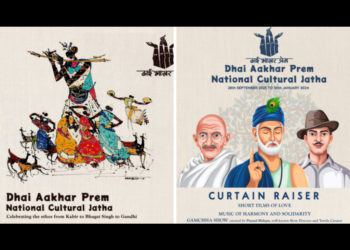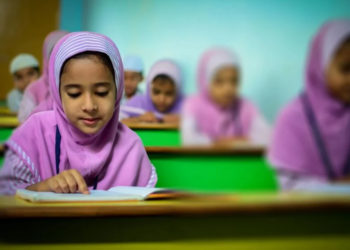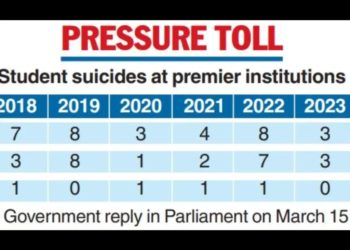Karthika Naïr was born in India, lives in Paris, and works as a dance producer and curator. She is the author of Bearings, a poetry collection; DESH: Memories, inherited, borrowed, invented, a dance diary; and The Honey Hunter/ Le Tigre de Miel, a children’s book illustrated by Joëlle Jolivet. Nair was the principal story writer and scriptwriter of DESH, choreographer Akram Khan’s multiple-award-winning dance production.
In her latest work, Until the Lions (HarperCollins India/Arc Publications UK), Karthika Naïr retells the Mahabharata as poetic verse, through multiple voices. One of South Asia's best-loved epics, the Mahabharata transcends time and place, and is as much a social and political treatise as a rousing saga of gods and heroes, an interrogation of power and the fissures around concepts like justice and duty that give moral sanction to violence and war.
Naïr refracts the epic through the lenses of nameless soldiers, outcast warriors and handmaidens as well as abducted princesses, tribal queens and a gender-shifting god. As peripheral figures and silent catalysts take center-stage, we get a glimpse of lives and stories buried beneath the edifices of god and nation, heroes and victory—of the price paid for myth and history, all too often interchangeable.
In this interview she talks about the Natyashastra, the divide between pre-modern and contemporary art, variations on the Indian epics down the ages, her interpretation of the Mahabharata, and how she sees all art-making as a political act.
Vikram Zutshi: I'm very interested in mapping the divide between sacred dance forms based on principles derived from the Natyashastra and contemporary interpretative movement forms. Is it a misnomer to say that traditional forms are not innovative?
Karthika Nair: The Natyashastra is an extraordinary tome, and the influence it bears not only on classical dance forms in South Asia, but on other art, including popular cinema, cannot be highlighted enough. Nonetheless, let’s not forget that even in ancient times, it was not sacrosanct, that a playwright as renowned and redoubtable as Bhasa infringed the rules of the Natyashastra—and to electrifying effect (what would Urubhanga be without Duryodhana dying?).
That it was not the only set of injunctions for stage. I am no expert (far from it) but when I attended seminars on Koodiyattom, it became evident, for instance, that Nandikeshwara’s Abhinaya Darpana was highly influential in structuring the art, with its tenets quoted even today by performers and teachers.
The more I look at the past, the more I feel that multiplicity of perspectives and guidelines and divergence of thought is not a modern phenomenon as we often pigeonhole it. And absolutisms and binaries can be very reductive; they are also more often the non-practitioners’ predilection. Most of the dancers and choreographers I know are keener on collaborating, on finding ways of entering each other’s worlds than in drawing up hierarchies.
And I have seen senior warrior monks at the Shaolin Temple engage – full of curiosity and openness – with contemporary dancers, hip-hoppers dance alongside kathak exponents, master calligraphers work with animators, and seldom any reproaches on absence of innovation from one side or lack of respect for tradition from the other.
There are, of course, differences between contemporary dance and classical dance forms (sacred or otherwise). One of the differences perceived – but one common to many forms of classical dance, not just Indian but Javanese and Cambodian and ‘Western’ ballet – is that lexicon and syntax tend to be more defined, more structured when compared to contemporary dance, where choreographers have – in a relatively short span of time – seized the freedom to work outside existing, established morphologies of dance.
But that freedom also comes with the challenge of creating one’s own or rearranging existing structure, the need to birth another creature as it were. Then again, contemporaneity is very dance culture-specific; it differs from region to region — this cannot be overstated, I feel.
Vikram Zutshi: Which are the most striking regional variations of the Mahabharata that inspired you? What were the some of cultural processes that went into these interpretations? Can you talk about the creative process that went into the writing of your book?
Karthika Nair: There are far too many to list here, but Until the Lions has a full bibliography (as well as filmography and theatre/dance references). Others – not specifically mentioned in the bibliography – are oral traditions like the ones in Himachal Pradesh where Hidimbi is worshipped as a goddess, or the Jain renditions that provide a back-story to Shakuni’s venality. Koothu, Tamil folk-theatre, focuses a lot on Aravan’s sacrifice, which would not be familiar to most people outside the state but it is documented in the Parata Vempa – Peruntevanar’s Tamil retelling of the Mahabharata – as well.
My favourites are a varied lot — old and new, literary and performative. Bibek Debroy’s translations of the critical edition of the Mahabharata compiled by the Bhandarkar Oriental Research Institute in Pune; definitely Bhasa’s plays, especially Urubhanga; for sheer sweep and detail, Shivaji Sawant’s Mrityunjay; for incisive analysis, Irawati Karve’s Yuganta; for poetic heft, Arun Kolatkar’s Sarpa Satra, of course; for subversive power, Mahaswata Devi’s After Kurukshetra…
Interpretations, regional ‘variations’, cultural assimilation (like the Jain or Khmer or Mapilla tellings) — they are all wonderful acts of deploying the imagination on an existing canvas to represent one’s lived reality and mores. And, like the Mahabharata, which itself underwent so many changes, they seem to reflect the changing socio-cultural matrix in which they developed.
As for my own creative process, well, the first two years were entirely devoted to research, and then I began writing. But the process of reading, watching, absorbing (translations, critical essays, interpretations, re-workings, adaptations into other media) never ends… it continued well through the three additional years of writing the book.
Vikram Zutshi: What were some of the insights you gained about the marginalized characters in the epic and how did you go about fleshing them out?
Karthika Nair: The most important one would be that Vyasa’s Mahabharata does contain just about everything, as it states; it is a question of how attentively one listens. It is anything but a Manichean narrative, and part of its enduring power comes from the constant reminder that there is seldom a single story, that dominant narratives – whether of victor or visible victim – hide so many others. It is this array of truths, and the complexity of characters – central or marginalised – that I find most compelling in the epic, and it is very much a tradition that begins with Jaya, the core of Vyasa’s Mahabharata, and is then magnified and perpetuated by all the later tellings, ancient and otherwise. It is also a brilliant, unforgiving manifesto of the ways in which we are all – whether hero or villain– often complicit in injustice, in battle. This is all too easy to overlook: that while we are victims of violence, we also inflict it almost unthinkingly, in many lethal ways; we perpetuate cycles of violence whether out of inherited hate, or righteous anger or hurt.
And it is that intersection of narratives and motives, and the refracted voices that I have tried to find. Until the Lionsfocuses on many peripheral characters but there are central ones too, like Kunti or Satyavati or even Krishna. And my aim was not to switch binaries – which isn’t a very interesting exercise – but to hint at the ‘layeredness’ of characters.
For instance, there are poems that establish Duryodhana’s growing loathing for the Pandavas, his overarching envy (through his mother’s voice, among others). Others where his qualities as an excellent ruler to his people, as staunch friend to Karna, as devoted husband, are highlighted — all of which is in the Mahabharata. We contain multitudes within ourselves.
Vikram Zutshi: You mentioned somewhere that writing this interpretation was a 'political act'. Would you care to elaborate further?
Karthika Nair: Of course. And that was part of a larger statement: I said I saw all art-making, not just poetry, as a political act. “Not always overtly, not even consciously often, but I think art reflects, highlights one’s political questions, stances, biases—and privilege, or lack of it. Even explicit declarations by artists that there is nothing political in their work, that they are not political beings. To eschew politics is also political; a valid choice, perhaps, but definitely a political act.”
(http://www.livemint.com/Leisure/pJnapjr4m3Jeu6wxD3muqN/The-casualties-of-the-Mahabharat.html)
Within the 18 parva of what we know as Vyasa’s Mahabharata, we come across something as subaltern, as radical as the Stree Parva, an entire book where the women of both clans (not just queens and royalty, but subjects), mourn their dead and rail against the futility of war (the laments interspersed with memories of connubial bliss, which again provides a startling blend of rasas), a book that culminates with Gandhari cursing Krishna, the supreme being, with the destruction of his clan and a horrible death for the untold sorrows he catalysed — a curse, incidentally, that comes to fruition. Similarly, the various episodes devoted to Karna leave us in no doubt about the injustices meted out to him for his low birth, indeed we even hear this admission from the mouth of Krishna.
And ancient interpretations aren’t lacking in what we seem to define a modern political sensibility either. Bhasa – two thousand years ago, at least – imagined a scenario where Abhimanyu and his cousins refuse the war their fathers have embarked upon, refuse to kill each other.





